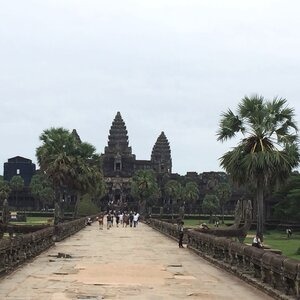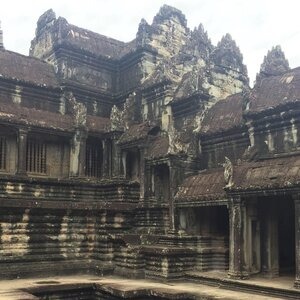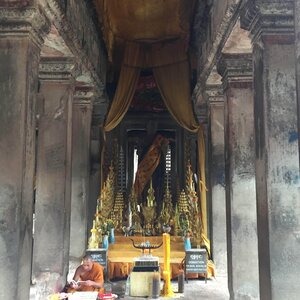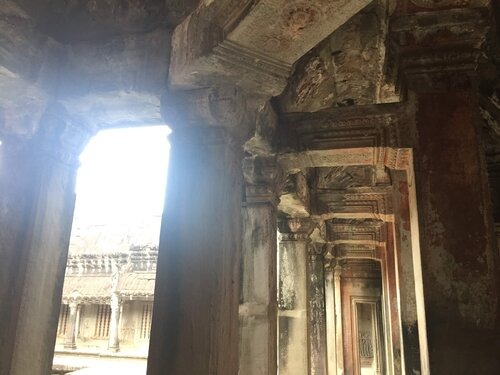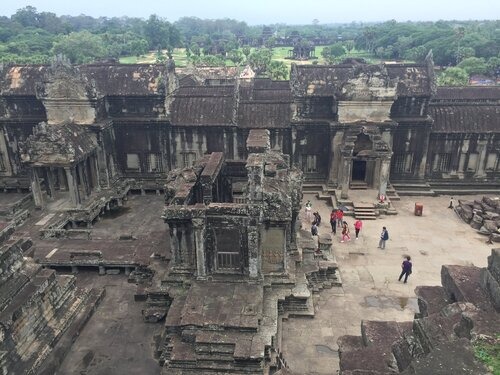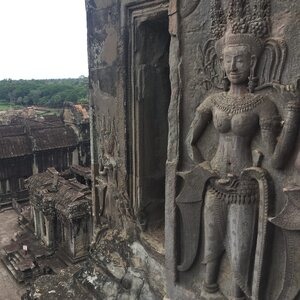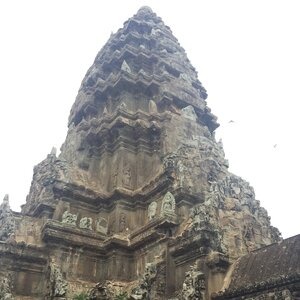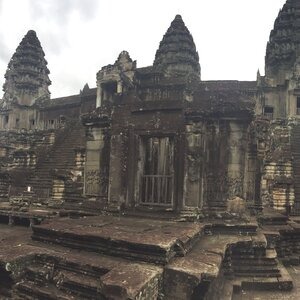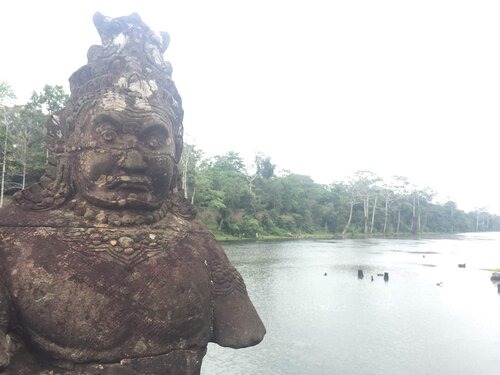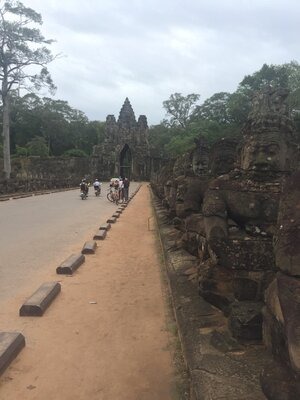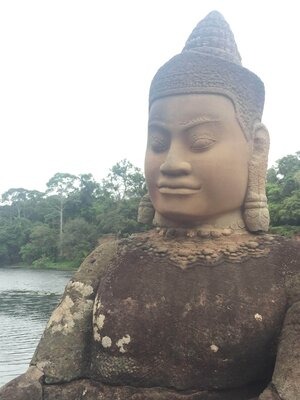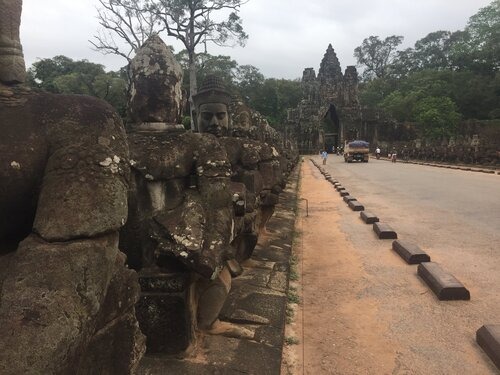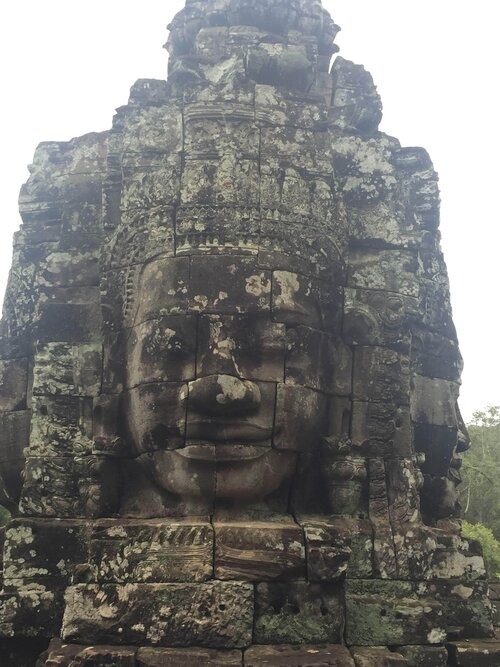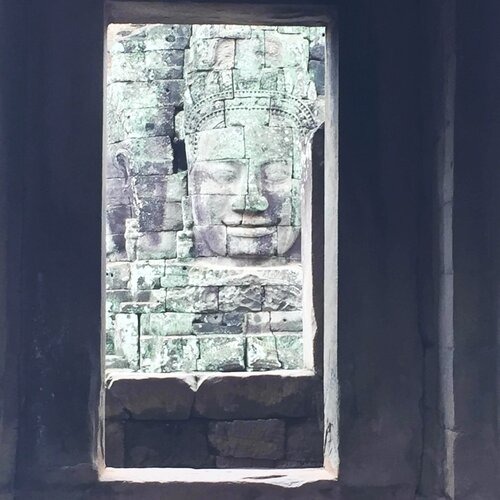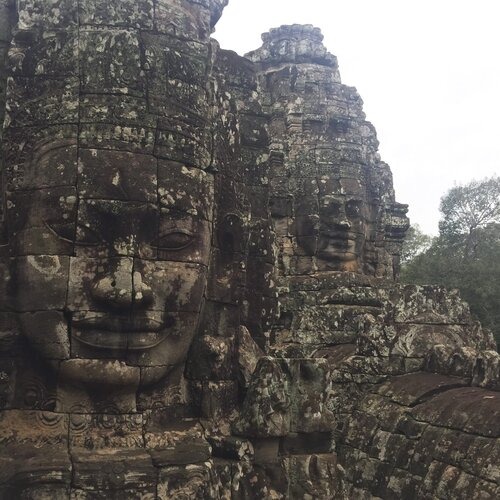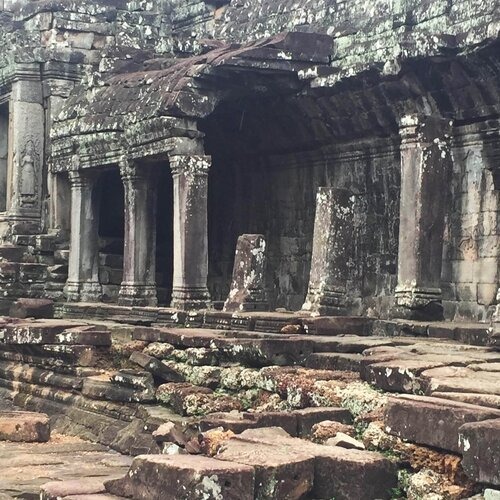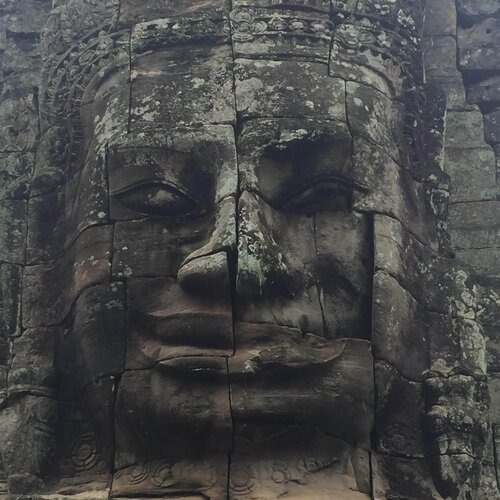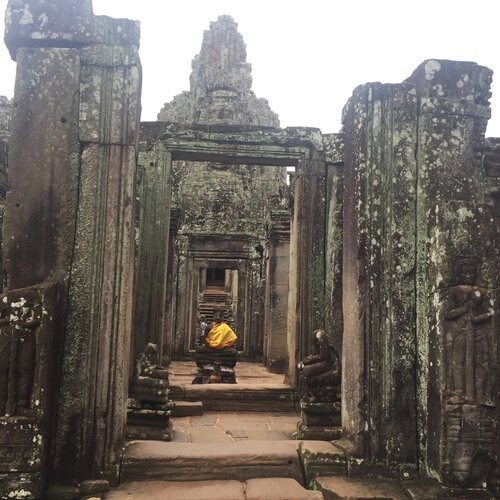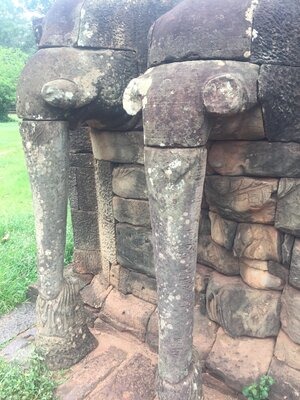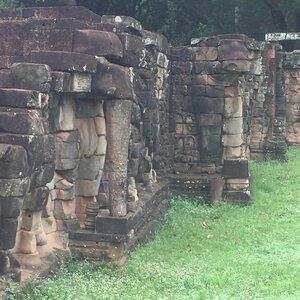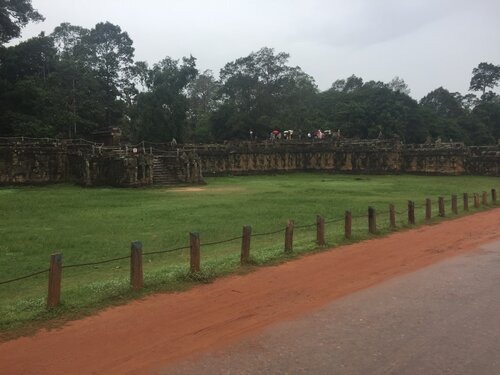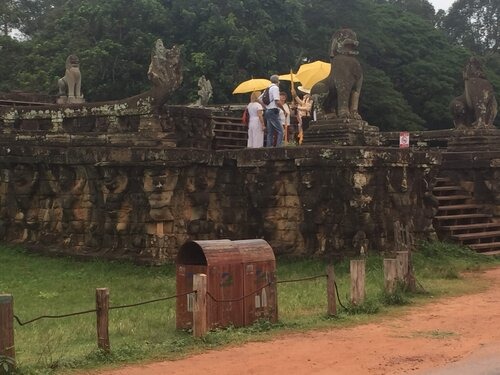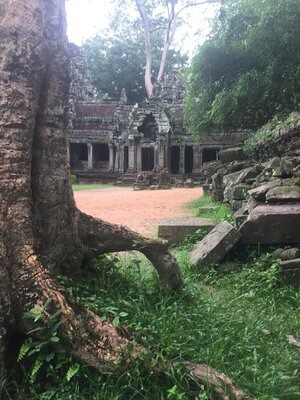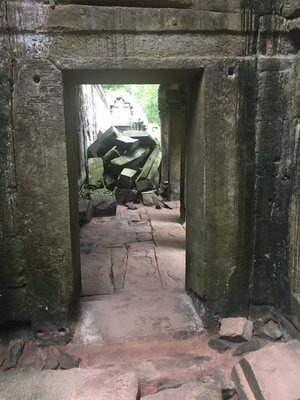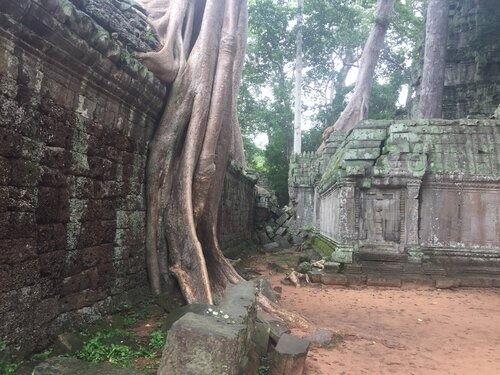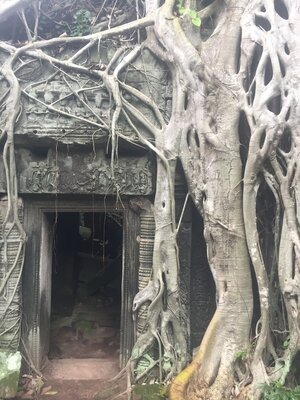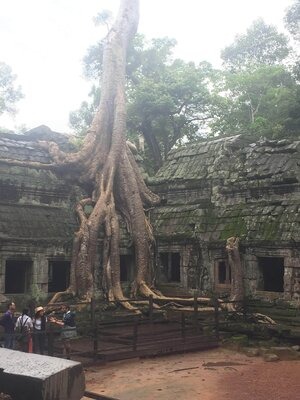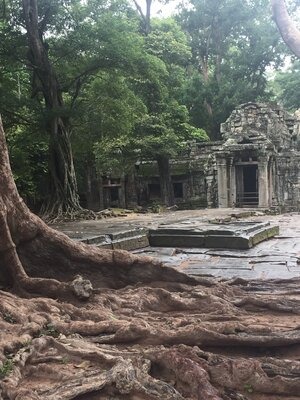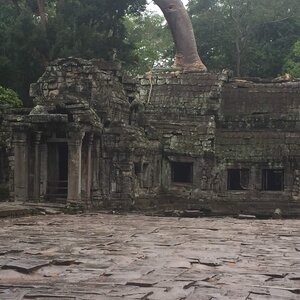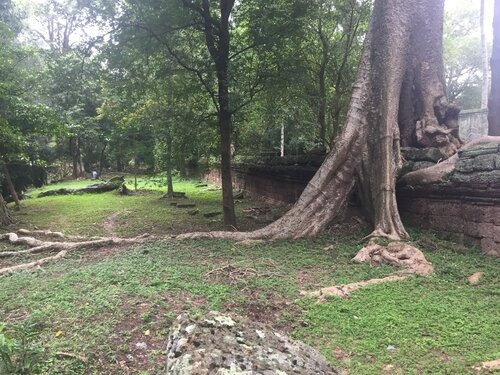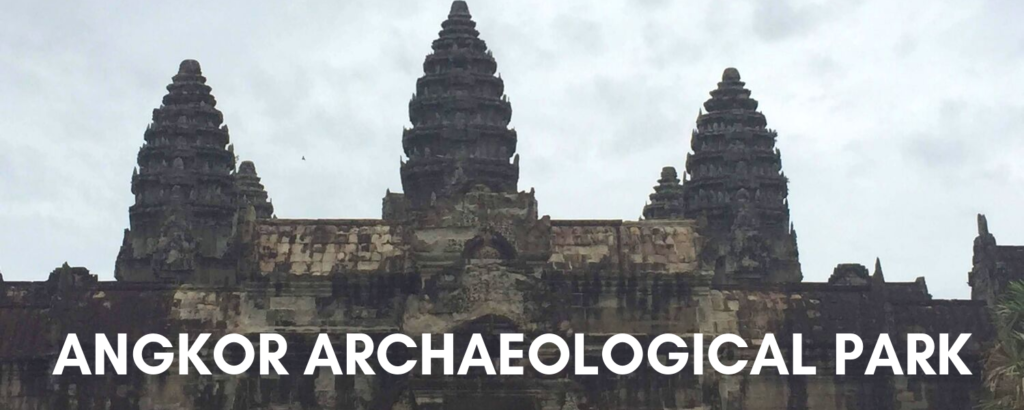
Angkor Wat – or as the kids called it “Angkor What?” – is the largest religious site on the planet, is something we’ve always wanted to experience and is basically freaking cool. Em could totally history geek out and spend days exploring while Eh liked that Angelina Jolie filmed part of Tomb Raider here. No matter how you split it, Angkor Archaeological Park is a must and you can do it with your kids.
Let’s start by setting realistic expectations. After all, honest expectations are the key to happiness (if you’re cynical, you can read that as “expecting the worst and you’ll always be pleasantly surprised”). The temple complexes of Angkor are massive. You will not see them all. You may not even be able to fully explore the ones you do see. This place will amaze kids, overwhelm them, frustrate them (what do you mean I cannot climb these rocks), and tire them right out.
ANGKOR ARCHAELOGICAL PARK
Established to restore, preserve, and straight-up protect, Angkor Archaeological Park is a UNESCO site which draws visitors from around the world. Angkor Wat is the most famous temple, but there are in fact over 50 temples spread across 20 sites. That’s why the park covers 400 square kilometres.
Let your imagination run wild as you picture this capital city at the pinnacle of it’s power. It’s a great time to paint word pictures with your kids. This was the epicentre of the Khmer Empire which ruled most of South East Asia from the 9th to 15th century. Historians estimate the city once had a population of 1 million – we’re talking megacity long before megacities were a thing. Invite your children to visualize the hustle and bustle of people, music, incense, royalty, and art all mixing on streets unlike anything the world had seen at that time.
NAVIGATING THE PARK
Most tours cover one of two loops. The little circuit (shown in red) and the big (or grand) circuit (the little circuit with the additional green line attached). The little circuit is doable in a day where the long circuit requires multiple days. See below for our itinerary and helpful hints.
To get around the park you can hire a bicycle, a tuktuk, cars, or minivans. Tours follow one main roadway and so planning your trip and talking with a guide is easy to do as everyone seems to flow clockwise. If you don’t want to go with this flow, you can salmon it and have your driver take you wherever you’d like or do the route counter clockwise.
Take time before you go to decide on what you want to see and how you’ll get around as that will inform your decision about which ticket to buy.
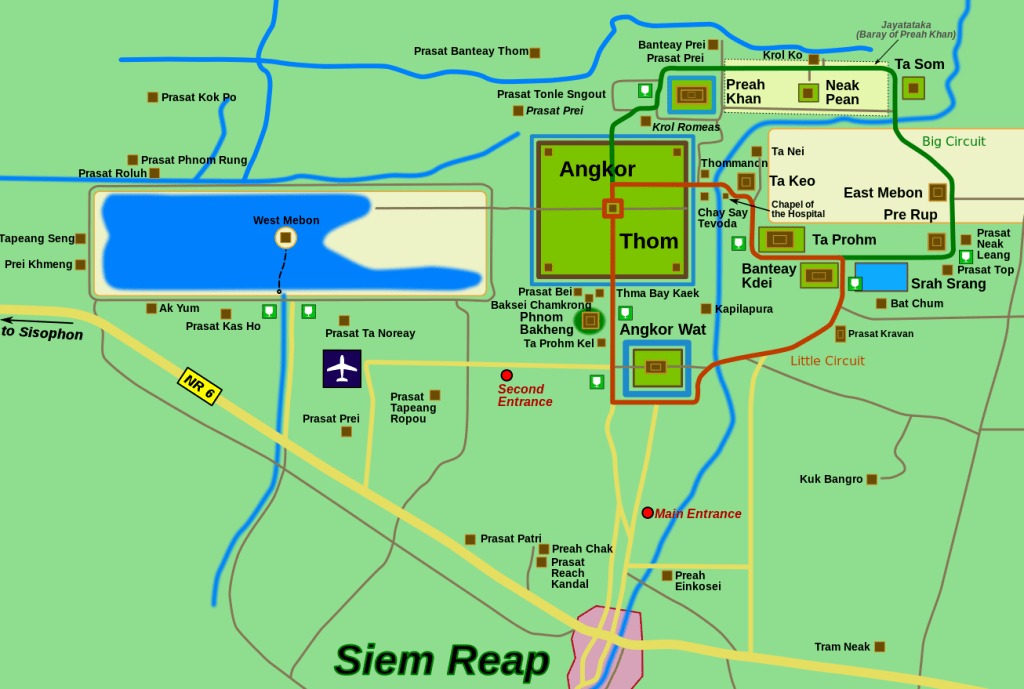
Tour companies are abundant in Siem Reap and so you will have no problem booking transportation and a guide – even last minute. Even on KLOOK, prices were around the same and with independent vendors, you can negotiate. Our hotel had a one day package (by tuktuk, car, or van). We opted for the tuktuk for $18 USD. This did not include a tour guide, but there are heaps and piles of those waiting for you at the park.
Our tuktuk driver met us at the hotel at a time of our choosing (8am), took us to get tickets, and drove us around for the day. Many of the tour operators we looked at have similar packages on offer.
ENTRANCE TO THE PARK
Standing in a vast parking lot on Apsara Road, the Angkor Archaeological Park ticket office is a big building with small food vendors where you can grab a meal or a drink to go, bathrooms, souvenir shops, and ticket windows. Like most places in Cambodia, it was overstaffed and so navigating the purchase process was simple. You’ll have to smile for your picture to be printed on your ticket and present ID (passport is best).
Cambodians enter for free and foreigners pay. Prices vary by the number of days of validity. Note that any ticket sold after 17:00 (5pm) is valid starting on the next day. Children under 12 are free. If your kids are close to 12, or look like they might be, bring their passport as proof of their age.
With tickets in hand, it’s just a short drive to the park’s main entrance. As you enter the park, they will check your tickets. Be sure to hang onto them as they will check them again when you enter the main temples.
2019 ANGKOR PASS PRICES PER ADULT:
- 1 day ticket = $37 USD
- 3 days ticket = $62 USD (you can use this for 3 non-consecutive days within a 7 day window from the date of purchase)
- 7 days ticket = $72 USD
*be sure to check with the ticket office as prices and rules may change
WHEN TO VISIT
Rainy season (June to November) is when we made our way to Angkor Wat. You can break it down further as June to August are hot, rainy, and humid while September to November tends to be cooler, rainy, and less humid. For most northern hemisphere folks, even Cambodian cool is still hot. We visited in the “cool” wet time and the days were overcast with some showers, but rain jackets were enough to keep us dry. Footwear was a challenge as sandals meant we were not worried about puddles, but it was slippery at times.
Dry season begins near the end of November and lasts until February. It is peak season as Christmas and New Year’s holidays allow people the time to travel. You can expect to see a jump in numbers – both the number of tourists and the prices of hotels and flights. That said, climate wise, this is the best time of year.
Hot season lasts from March until May. You may hear your skin sizzle, but humidity and rainfall is lower. We’re not saying don’t come, we’re just saying be prepared to sweat in ways you never knew possible.
At any time of year, be sure to hydrate well as you are losing lots of water. Take extra precautions for your little ones with sunscreen, hats, water, and UV resistant clothing.
People also debate the best time of day to enter the park. Sunrise over Angkor Wat gets a photogs heart pumping hard, but we opted to go with a schedule which followed our kids normal wake-up times. Thankfully they are all early risers (cannot believe we actually just said that). Do whatever will position your family for success. Most sites are open from 07:30 (7:30am) to 17:30 (5:30pm), though some sites have different visiting hours. Be sure to check when buying your Angkor Pass.
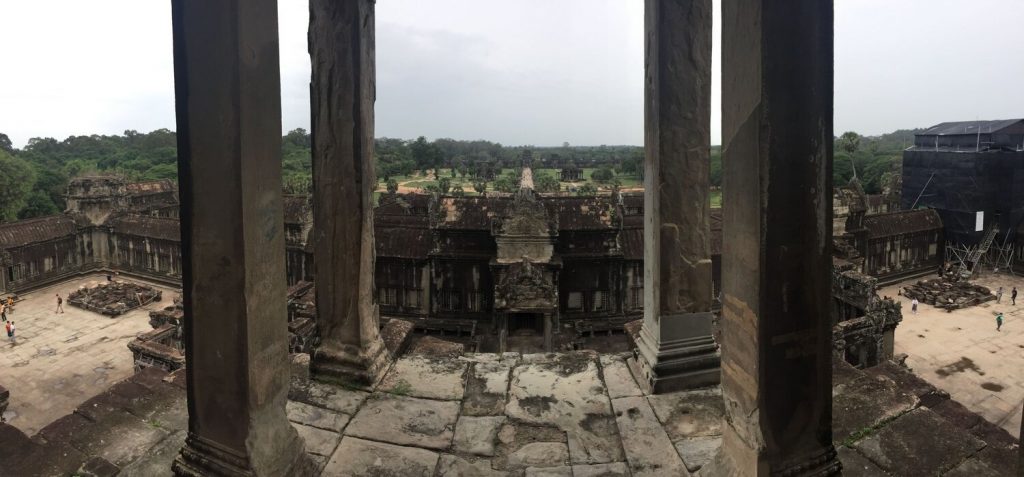
SHORT LOOP IN ONE DAY
As a parent, self-care involves setting yourself, and your kids, up for success. And that’s why we chose the short loop. Our kids are 7, 6, and 1 and we knew this would push some thresholds for them. We settled on doing THE BIG THREE: Angkor Wat, Banyon Temple, and Ta Prohm.
*alternate plan: we had friends with kids a little older than ours who split their visit into 2 mornings. They went from morning until lunch on 2 consecutive days. They said it was better for their kids, but they did have to purchase the 3 day entry ticket.
OUR ITINERARY
After getting our tickets, we set out on the short loop. Most tours begin with the main event – Angkor Wat.
We took the drive time to set the stage for our kids. These temples were epic as kings tried to one-up their predecessor (my temple is bigger than your temple, nah nah nah nah). There was a tug-of-war of beliefs as temples were made Hindu, Mahayana Buddhist, and Theravada Buddhist and then back again. There were wars with neighbouring kingdoms, rebellions (we’re looking at you Siam), and huge leaps in technology. Get your kids pumped before you even arrive!
ANGKOR WAT
Built by Suryavarman II, this temple is as in your face as they come. It represents Mount Meru – think Mount Olympus but for the Hindu worldview.
From the drop-off point, you cross a moat into the first structure. Coming out the other side, it opens to a causeway crossing a field, and there looms Angkor Wat. The temple itself is intricate and grand. The carvings of the apsaras (divine nymphs) have stood the test of time.
The entire experience culminates with a very steep climb to the Bakan Sanctuary, a courtyard between the four main towers at the base of the central tower. To our children’s great disappointment, kids are not allowed to ascend to the realm of the gods. As parents, we weren’t going to let that stop us from experiencing this, so we took turns going up while the other adult explored the lower courtyard with the kiddies.
As you leave Angkor Wat, there is a statue of Vishnu. It’s a great opportunity to pause and allow your kids to see this active place of worship.
To really blow their little minds, you can talk with your kids about how the temple was built. Sandstone blocks from Phnom Kulen Mountain, some 50 kilometres away, were floated down the Siem Reap River using rafts. An inscription in the temple says that the construction required 300,000 workers and 6,000 elephants.
We spent about 2 hours here and barely made a dent. Full disclosure, our 6-year-old declared she was done by this point and so we needed to find a snack shack to recharge (bribe, we bribed her with treats).
ANGKOR THOM
From Angkor Wat, we were off to Angkor Thom. While Angkor Wat is a massive temple (was means temple), you have to think of Angkor Thom as a city. You can spend a day exploring it’s sites and not see them all.
To enter Angkor Thom, you cross a bridge to enter the South Gate. This is the best preserved gate to the “Great City”. Have your driver stop so you can stare into the many carved faces which are starring at you.
There is one shared parking area with good access to Bayon Temple, Baphuon, and The Terrace of the Elephants.
Immediately on hand is the Bayon Temple. It is much smaller than Angkor Wat and is filled with smaller passageways which our kids loved. Most impressive were the countless faces watching us wherever we went. The carving and the detail is chilling. The Buddha achieved enlightenment while seated under a banyan tree. Apparently the workers who helped restore this temple mispronounced it as “bayon” and the name stuck. It’s eerie and serene and wonderful.
From the Bayon Temple, we crossed the road through a treed area to the entryway to Baphoun Temple. We only explored this one lightly as it was raining and our kids were not liking the damp. What really grabbed their attention was the fact that this temple was once dismantled, numbered, and put back together again (mostly – civil war put a wrench in the plan).
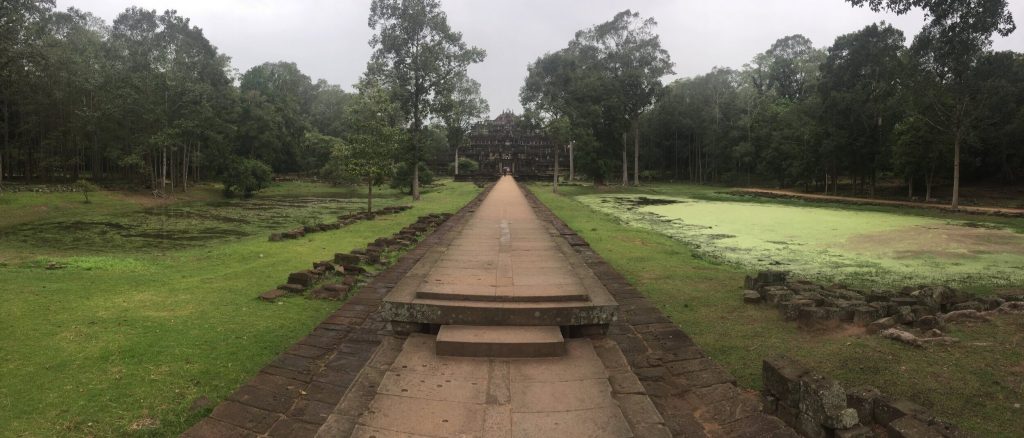
We had intended to visit Phimeanakas Palace, but our parental spied senses told us that would be pushing it. So instead we did a power stroll of 300 meter long Terrace of the Elephants. As the name implies, it’s adorned with giant elephant carvings in different states of decay. We probably could have saved some time here as you do a drive by of this as you exit Angkor Thom.
To leave Angkor Thom, you drive through the East Gate and pass through the Victory Gate. We paused in the tuktuk to look at Ta Keo Temple as we drove past.
To think of Angkor Thom in it’s prime did wonders for kids. When we told them that the city was sacked by the Ayutthaya Kingdom (which is now Thailand – where we live), our kids had an odd moment of pride. With the fall of Angkor Thom, the Khmers moved their capital to Phnom Penh, where it remains today.
TA PROHM
Picture this – you’re Laura Croft, Tomb Raider and you’re racing through a temple overrun by soaring trees and their winding roots. You don’t need to imagine it as Ta Prohm was used to film the movie.
With the fall of the Khmer Empire, Ta Prohm was left to the jungle – and the jungle moved quickly to reclaim what once was it’s own. Unlike many of the other large temples, Ta Prohm had little restoration work save what was required to keep the structure upright. That’s changing now and parts of the temple were inaccessible to us because of repair crews.
This was our family favourite. The excitement of the trees overtaking the temple re-energized our kids at the end of a full day. We all agreed, this was the highlight.
Angkor Wat is iconic. Bayon Temple is artistic. Ta Prohm is cool.
HELPFUL HINTS
You can bring drinks and snacks in with you and leave them in your vehicle, but if you don’t, that’s no problem. Most sites have a parking area where food and drink vendors have set-up shop at absolutely reasonable prices. We smoothied our way through the park.
Keep your tickets accessible as they will check them as you enter the park and at the entrances to the major temples.
Bring a carrier as there is no way a stroller can cover the terrain and temples of Angkor Archaeological Park. As much as you would love that pram, accept now that you will have a baby-shaped sweat mark on your chest or back.
Don’t pee in a bush. It’s historic or sacred or both. There are washrooms near most parking areas. These facilities are clean and looked after.
There will be tour groups. You will have to navigate around people. You will have to wait. Certain Asian groups will take pictures of your blonde and ginger children. It’s tourist hotspot. Be patient. Be kind. Be helpful. Enjoy the experience as a collective one and let go of your individualistic (read Westernized) tendencies.
Ah, to guide or not to guide, that is the question. Getting a local guide enhances experiences with insights and stories that may otherwise be missed. The park is so huge that there is no way you can pre-read enough. After much debate, we opted not to get a guide. Considering our kids’ bandwidth, we wanted to be able to move at our own pace. Google and Wikipedia helped pull a few key facts about each site that we visited.
Parking areas are awash in tuktuks, motos, cars, and vans so be sure to take a picture of your vehicle, license plate, or driver so you can find your way back to them. Where they drop you may be different from the parking area where they’ll wait for you so be sure to ask where you will meet again.
BE RESPECTFUL. More than ancient ruins, these sites are sacred to many and some are active religious centres. These structures, especially Angkor Wat, are a national symbol and source of pride for Cambodia. We’ve been allowed to come and visit and so we need to be good guests:
- no sex appeal required as covered shoulders and knees are a must.
- be mindful of others, especially when trying to grab that perfect pic for the ‘gram.
- littering – don’t be that guy
- do not climb. This is a hard one for kids, but there are stairs and ramps and rocks for them to bounce off.
- the park is well signed. Follow the directional signs to keep the flow of foot traffic moving.
- keep your mitts off the monks. Do not touch a monk, especially if you are a lady.
BOTTOM LINE
Angkor Archaeological Park is truly amazing and absolutely doable with young children. If you’re going to come all this way, make the most of it and explore the town of Siem Reap as well.

